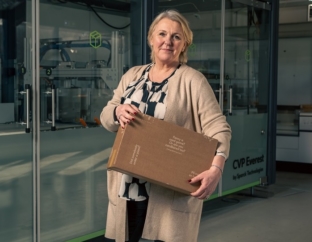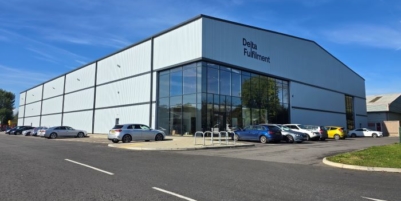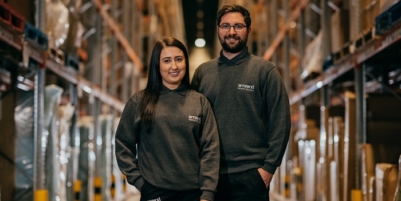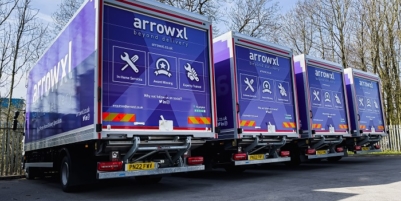-
Nutrivend selects Forterro’s Orderwise to support online expansion and streamline operations - April 11, 2025
-
ARROWXL LAUNCHES AMBITIOUS ZERO WASTE ROADMAP - April 8, 2025
-
THE BCMPA’S NEW CAMPAIGN DRIVES OUTSOURCING SUCCESS IN Q1 - April 7, 2025
-
BLACKOUT TECHNOLOGIES TARGETS TELEMATICS-INTEGRATED MOBILE DEVICE BLOCKING TO COMBAT SMARTPHONE DISTRACTION - April 1, 2025
-
OpenADR Alliance announces first OpenADR 3.0 certified products with EVoke Systems, E.ON Energy and Universal Devices - March 25, 2025
-
Growing fulfilment and contract packer appoints new Managing Director - March 25, 2025
-
When is it time to invest in a WMS? Understanding the key trigger points - March 25, 2025
-
eCapital helps Vantage Recruitment on its journey to financial success - March 24, 2025
-
Hugo Beck Celebrates 70 Years of Packaging Innovation with Open House Events - March 20, 2025
-
PROLOG FULFILMENT SUPPORTS LUNA DAILY’S COMMITMENT TO BETTER BODY CARE FOR ALL WOMEN - March 19, 2025
Ecommerce businesses are facing a surge in the cost of transit packaging – a triple hit of escalating prices for materials, labour and fuel. But there’s a smart way to fight back, says Jo Bradley, Business Development Manager at Sparck Technologies
It’s often quite hard to see the added value in transit packaging – all the cardboard boxes or cartons, tape and ‘void fill’ that carry a consumer’s purchases to the doorstep or parcel locker. However, it’s essential for creating a safe unit load – often for multiple items – and to protect goods from damage in transit. In addition, how a package is received, ie is prepared and presented, is fundamental to protecting, or building, brand image.
There seems to be a significant number of ecommerce businesses that still take a simplistic approach to packaging, perhaps, using a range of average box sizes and packing manually across numerous work stations. This tends to be highly labour intensive, slow and wasteful, and critically, exposes the business to the impact of rises in the cost of materials, labour and transport.
Alarmingly, these costs are rising inexorably. Take the materials involved. On an index based at 2015 = 100, paper and board prices in 2021 had crept up to 103.3 – but currently the index stands at 141.5. That is some increase.
Labour issues
Labour isn’t getting any cheaper either, and in many operations packing is still largely a manual process. The minimum wage went up to £11.44 per hour in April, a rise of 9.8%, which significantly adds to costs – not to mention the difficulty in finding available labour, especially at peak periods. According to Totaljobs, the average distribution centre salary (including supervisory roles, and with some large regional variation) is £28,363.
Transport too is dearer – fuel and driver costs of course, but also other elements such as insurance premiums. And not all these increases have been passed through yet – 2023 was a record year for insolvencies among hauliers and carriers as the number of parcels being despatched fell back from its Covid peak. According to postal machinery vendor Pitney Bowes, volumes fell by 5% to ‘just’ 5.1 billion in 2022 – nonetheless, they forecast a Compound Annual Growth Rate (CAGR) of 1% per annum to 2028 as ecommerce continues to grow. Other forecasts are more buoyant, anticipating considerable growth in small packages such as medicines.
Figures from ‘Motor Transport’ journal suggest that while costs per mile for large vehicles were fairly steady in 2023, costs for a 3.5 tonne van, more typical of ‘last mile’ distribution, were up by 4%. Maximising the cube of the trailer or van would go a long way to shaving costs.
We can’t eliminate the need for transit packaging, but we certainly can limit the costs involved, and ‘right sizing’ packaging offers significant savings. Sparck Technologies’ Impack and Everest ranges of automated packing lines help address all three cost areas.
Right-sizing boxes
This is achieved through advanced 3D scanning technology that measures the volume of the items in an order and calculates the optimum shape and size of box required, which is then automatically cut from the raw material fanfold, creased, erected, sealed, check-weighed and labelled. Right-sizing parcels can reduce the consumption of card by 30% or more, as well as eliminate the need for void fill.
When it comes to labour, throughput of up to 1,100 orders an hour can be achieved with just one or two operators, replacing up to 20 on purely manual packing stations. Automation also alleviates the stress and strain of trying to find suitable, available labour – a particular problem at peak periods.
And on transport costs, smaller packages increase the earning efficiency of vehicles, especially of vans and cars in the ‘last mile’. Internal transport in the warehouse is also made more efficient as fewer totes and cages have to be moved around for a given number of orders. To the extent that right-sizing boxes reduces the number of vehicles to be loaded, this also reduces congestion around loading bays and makes it easier to meet ever tighter intervals between cut-off and despatch.
Right-size boxing technology presents an obvious way forward for ecommerce businesses looking to reign in the rising costs of transit packaging. The same technology helps build in capacity for natural growth in the business and adds flexibility for tackling busy seasonal peaks. Automated right-size boxing technology offers the full package.
More information on Sparck Technologies’ CVP Automated Packaging Solutions can be found at https://sparcktechnologies.com

































